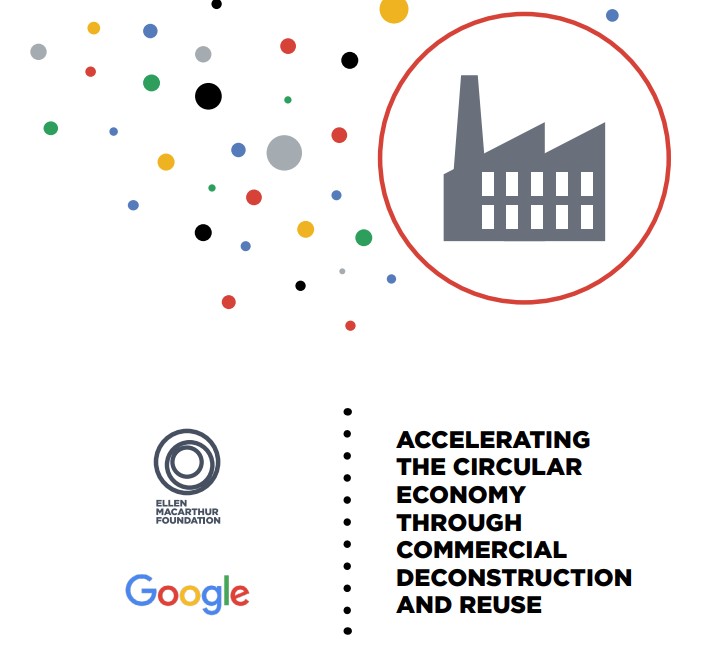“The past belonged to the labor-efficient… but the future is going to belong to the resource-efficient.” – Ray Anderson in “Confessions of a Radical Industrialist”
As global population grows and recognition increases that business and industry operate inside a closed and finite ecosystem, new design criteria for our products and services are emerging.
Doing profitable business inside a finite ecosystem will increasingly demanding a deep understanding of what resources we use and how well we use them.
Success will go to those with resource literacy…
In the same way that computer literacy has become increasingly critical to business and career success in the last two decades, a high level of understanding of the resources used to deliver our products and services will be critical to success over coming decades.
Resource efficiency will require a full-system perspective on products, services and systems – accountability and opportunity won’t only lie inside organisations, but across supply chains and delivery systems. Products and services designed with 20th century mindsets using 20th century systems are typically 1% efficient in their use of natural resources – rethinking them for a finite ecosystem is a major potential source of strategic advantage.
How’s your resource literacy?
What do you know about your business and its resource usage? What do you use inside your four walls to deliver your products and services? How much of what you use comes from renewable sources? How much uses up finite non-renewables?
What happens down your supply chain? Where do the materials and energy you use come from? What happens when something leaves your door – where does it go, what does it take to get to your customer and what happens next? What happens at the end of its useful life?
Can you answer these questions about the organisation you work for:
- How clean is your energy? How efficient is your supplier?
- How effectively does your organisation use that energy? (From the teakettle in the kitchen to the office computer to the factory plant and equipment.)
- What are the environmental impacts of the water you use?
- What happens to your waste water and sewage?
- Where do the inputs you use come from and what are their impacts? (Even small businesses use computers, paper and telephones)
- Where does your waste go? How effective are any recycling programs you contribute to?
Do you know what’s already going on?
What’s happening in your industry locally and globally? Who’s doing more than compliance? Who’s benefiting from radical efficiency programs? Who’s re-designing their supply chain and their business models? Who’s going all out for regenerative business – climbing Mount Sustainability and planning to “do well by doing good”?
Big thinkers and clever entrepreneurs have been working on new design criteria for our commercial systems at a range of levels. There’s an emerging toolkit for measuring and understanding how we use resources. Some of the tools include:
- The Natural Step
- Natural Capitalism
- Cradle to Cradle
- Environmental Management Systems
- ISO 14001
- Life Cycle Assessment
- Input/Output Assessment
- Ecological Footprinting
Can you see the whole picture?
These systems and models are all about our increasing understanding of the impacts of our products, processes and services at every stage in their life:
- What they’re made from and how they’re made – not just inside your four walls, but all the way back to the original resources.
- The resources consumed during their life – for some products, this substantially outweighs what it took to make the product.
- The impacts and resources of disposal – what happens when something’s useful lifespan is finished – there is no “away” inside a finite eco-system. End-of-life matters.
Can you look at a product on a retailer’s shelf and see its resource usage? Can you picture the warehouses, offices, factories, truck, trains and boats that it’s been through? Can you envisage the web of the industrial and commercial ecosystem behind them – the service stations, accountants, lawyers, printers, marketers and web developers? Do you have a feel for the resource usage that multiplies down through this supply chain?
If you can then you’re starting to understand the range of opportunities open to you. If you don’t, then this could make a big difference to your future success. You don’t need a degree in environmental science to get started – you do need to learn to observe differently – to understand resources and how they’re used. If your resource literacy isn’t up to scratch then it’s time to get started.
Where can you start?
Google the tools in the list above, explore the online resources of Natural Capitalism, or for a short executive summary buy your copy of The Deep Green Profit Handbook online now!










